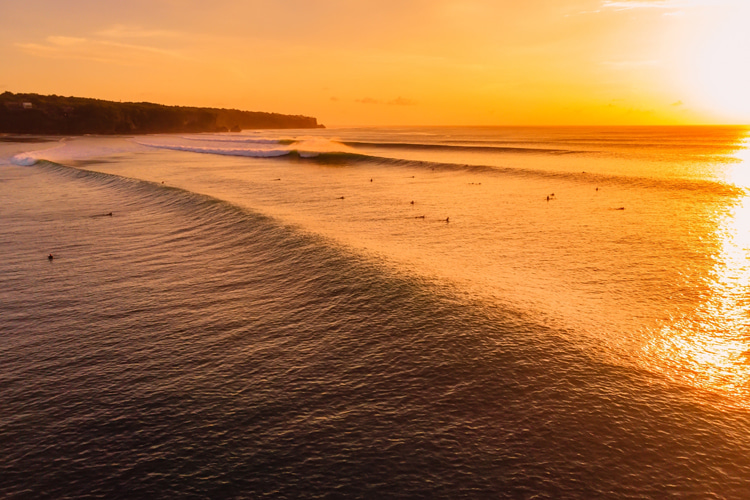
Every surfer is a potential amateur oceanographer and surf forecaster. The more we know about waves, the better we will ride them. So, let’s look a bit deeper into their motion mechanics.
Stand at the shoreline and watch the swell come in. You’ll notice the water rise and drop before surging forward.
But if you pay close attention, you’ll notice the motion doesn’t match the neat categories you may have learned in a science class.
Ocean waves are neither fully “up and down” nor fully “back and forth.” They’re a mix of both. They’re orbital waves.
To see why, let’s look at the two basic types of waves scientists use to explain motion.
Transverse Waves: The Up-and-Down Movement

A transverse wave moves energy by making particles shift at a right angle to the direction the wave is traveling.
The easiest example is a rope.
Hold one end, snap your wrist, and watch a ripple race across to the other side. The wave moves forward, but each part of the rope only moves up and down.
Light waves also behave this way, though you can’t see the medium itself “wiggling” in space.
The key takeaway here is that the disturbance is perpendicular – wave moves forward, particles move up and down.
Think about standing on a trampoline while someone jumps nearby.
You feel the lift and drop under your feet, but you aren’t being shoved across the mat. You go up and down, not left or right.
That’s transverse motion.
Longitudinal Waves: The Back-and-Forth Motion

A longitudinal wave is exactly the opposite. In this case, particles move parallel to the direction the wave is traveling.
For instance, sound is the classic example.
As sound passes through air, molecules don’t drift across the room; they bump into their neighbors, compressing and stretching the space in the same line that the wave is moving.
Imagine a slinky on the floor. Push and pull one end, and a compression travels down its length.
Each coil shuffles forward and backward, but doesn’t leap sideways.
That’s the main characteristic of a longitudinal wave: you’ve got energy traveling forward, particles shuttling back and forth in line with that travel.
The Ocean’s Hybrid Dynamics
Now, let’s return to the ocean. A surface wave – the scientific name given to the ocean wave – has features of both worlds above.
What happens is that as the wave rises, water particles move upward like in a transverse wave.
However, simultaneously, those particles are drifting forward and backward, just like in a longitudinal wave.
We end up witnessing the two motions merge into a circular – or more accurately, orbital – path.
A surfer sitting on their surfboard as a wave approaches will experience two things.
From the beach, it looks like they’re gently rocking up and down. But if you could trace their exact motion, you’d see them moving forward at the top of the orbit, backward at the bottom, and constantly looping.
This is also the reason why a surfer needs to paddle and nearly match the wave’s forward speed in order to “catch” and ride it. Otherwise, they will barely move.
It’s also important to stress that these orbits change with depth.
Near the surface, the circles are wide. Farther down, they shrink until the motion disappears.
In other words, in deep water, the energy doesn’t touch the seafloor. In shallow water, the orbits get squashed into ellipses, and that’s when the wave steepens and eventually crashes.
And that’s how surfing is possible.
Words by Luís MP | Founder of SurferToday.com


Leave a Reply